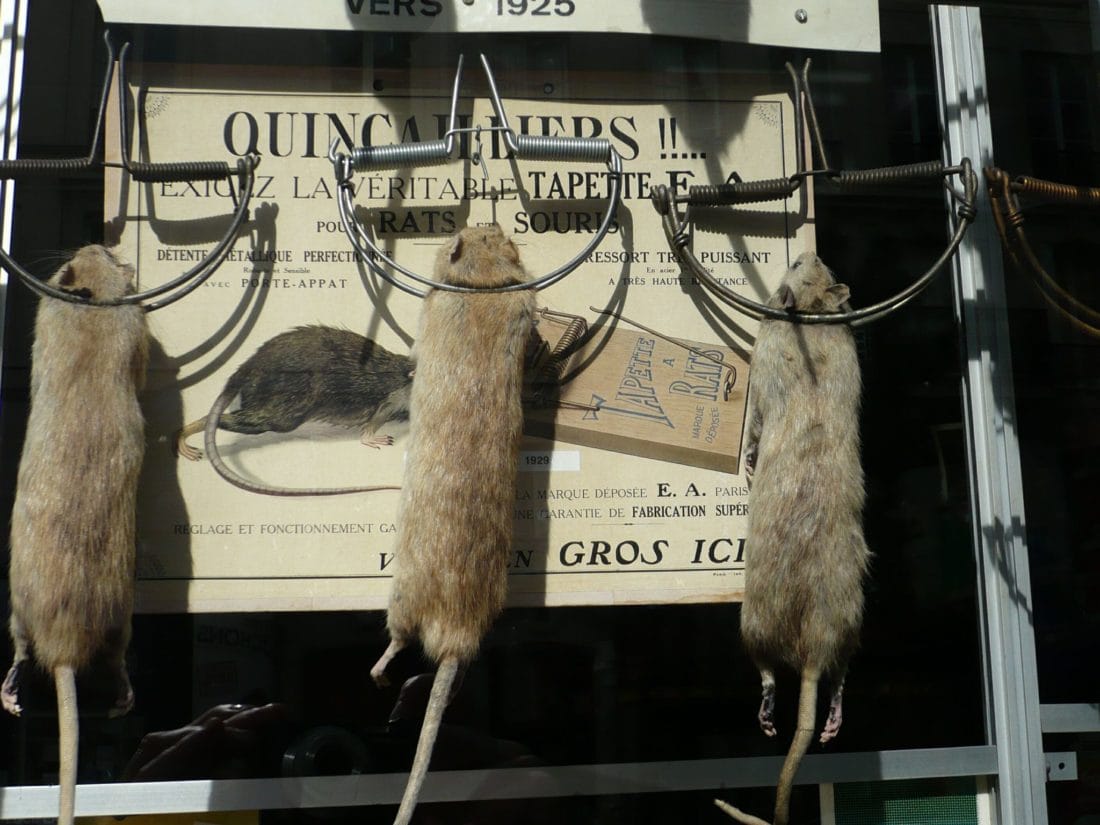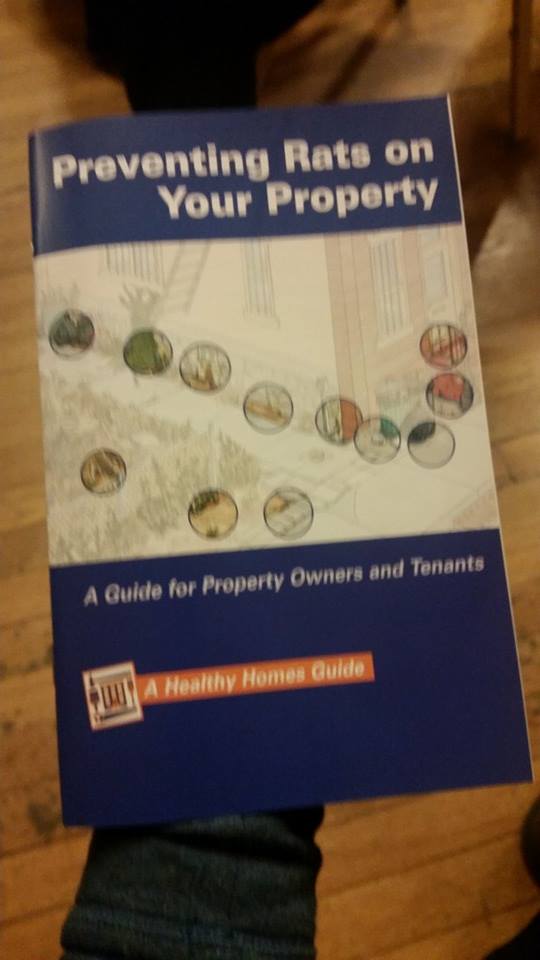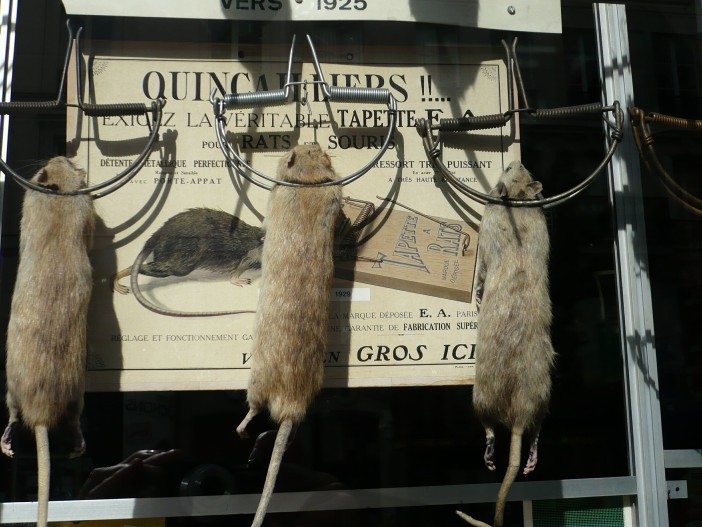Keep Rats Away: Rodent Prevention Tips From The DOH’s Rat Academy


When we first heard the words “Rat Academy,” the first thing that came to mind was an image of little Stuart Littles and Remys (of “Ratatouille” fame) attending school together a la Harry Potter’s Hogwarts. But in reality, this workshop — hosted by the city Department of Health (DOH) and Brooklyn Community Board 2 (CB 2) in a small auditorium on South Oxford Street — was an informative and educational workshop all about how to combat rodent infestations.
According to CB2’s Carol-Ann Church, the community board decided to sign on to the program after receiving numerous calls from frustrated residents over several months.
The first thing we learned was How To Control Rats:
- Look For Evidence
- Clean Up — wash away droppings and track marks, get rid of clutter, and control weeds, shrubs, and bushes
- Starve Them — manage your garbage and keep food away from them by sealing waste in tightly sealed containers (i.e. compost bins or trash cans with tight lids) and not leaving food out for stray cats.
TIP: spray your trash bags with a bleach-water solution in order to deter rodents poking holes in them. - Shut Them Out — by sealing cracks and small holes, and closing burrows
- Wipe Them Out — baiting them with an appropriate extermination company (because baiting them ourselves is dangerous to other small animals, pets, and children in the area.
“We don’t advise you to do self-extermination and -baiting,” said Tejumade Ajaiyeoba, community liaison with the Department of Health. “[Traps] need to be monitored and it’s dangerous for kids and pets.”
Other things we learned included tips about rat behavior — kind of like a rat version of Criminal Minds: get into their minds in order to keep them away.
- Did you know that rats only need a hole the size of a quarter to enter your home, business, or house of worship?
- They also prefer to live within 100 feet of food — so they could live on one side of the street and eat on the other.
- They only need one ounce of food a day. However, they also need water daily — so make sure your hose tap is not dripping and rain gutters are cleaned regularly!
- Rats also prefer to burrow in the ground, and are opportunistic creatures, willing to take buildings or even holes in lampposts.
- They do, however, love ground cover, so ivy and close, dense plants.
- Rats are smart, cautious, and fearful of new things.
- They use urine and pheromones to communicate.
- Rats have 8-12 pups per litter and can birth 4-7 litters per year — this means that what seems like a rat invasion could actually be one or two rats breeding like crazy into a single rat family.
According to the Health Department representatives present, Fort Greene and Clinton Hill’s rats are primarily made up of 1-2 nests with big families. By comparison, Cadman Plaza has dozens of nests, in the 40-50 range.
That is why the DOH said that that 2016 will see them focusing on Cadman Plaza and DUMBO — part of the next phase of their rat prevention program that was piloted successfully in the Bronx last year.

Another reason they chose those neighborhoods instead of ours is the fact that those areas have infestations that are affecting city-owned buildings and properties — as opposed to our rats going after homes and houses of worship.
However, the DOH says that that is why Rat Academy is so important — to arm residents with the knowledge of what to do in case of rat emergency. Step one: call 3-1-1.
“A lot of people call and never know what happens, but each time you call, it registers a ticket and an inspection within an average of 10 days,” said Carolyn Bragdon of the DOH’s Division of Pest Control Services.
The post-311 process includes Inspection, Abatement, a Compliance Inspection, and sending Staff Exterminators (the cost for whom the building owner is billed).
“After 3-4 calls, we might do traps and abatement,” explained Ajaiyeoba, the DOH community liaison. “For jobs we can’t handle, we will bring in [the Department of] Sanitation and bill the owner because [the DOH] has a limited amount of of inspectors.”
All of this can be monitored on the Rat Information Portal, which includes a searchable heat map that tracks the progress of inspections and reported rat infestations.
Rat indexing — cataloguing of rodent problems in a given area — is coming to CB2 after five years of not being included on the list of neighborhoods indexed. From 2010-2012, indexing was only done in Manhattan and the Bronx, while 2013-2014 saw indexed neighborhoods expand to include Brooklyn Community Board 4, and then 3 and 9.



